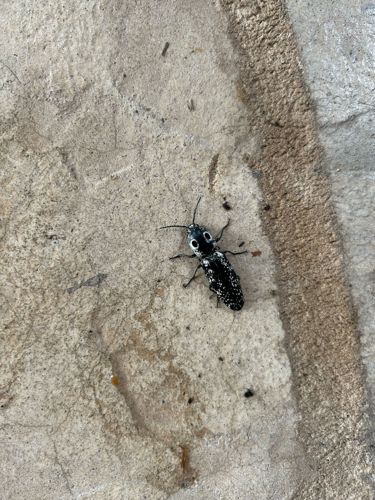Eastern Eyed Click Beetle
Scientific Name: Alaus oculatus
Order & Family: Order: Coleoptera, Family: Elateridae
Size: Typically 25-45 mm (1-1.75 inches) in length, making them one of the larger click beetles.

Natural Habitat
Eastern Eyed Click Beetles are typically found in woodlands, forests, and areas with decaying wood, as their larvae (wireworms) develop in rotting logs, stumps, or in the soil. Adults may be seen on trees or attracted to lights at night.
Diet & Feeding
Adults likely feed on nectar, plant sap, or are not strong feeders. The larvae (wireworms) are primarily predatory, feeding on other insect larvae and soft-bodied invertebrates found in decaying wood or soil.
Behavior Patterns
Adult Eastern Eyed Click Beetles are often nocturnal, attracted to lights. They are known for their unique "clicking" mechanism, where they can snap their bodies to right themselves when overturned, producing an audible click and often jumping into the air. The larvae, known as wireworms, live in the soil or decaying wood and are slow-moving.
Risks & Benefits
Generally, Eastern Eyed Click Beetles are considered beneficial or at least neutral. The adult beetles do not pose a risk to humans or plants. Their predatory larvae can be beneficial in controlling other insect pest populations in their habitats. They are a natural part of forest ecosystems, contributing to decomposition processes.
Identified on: 8/18/2025